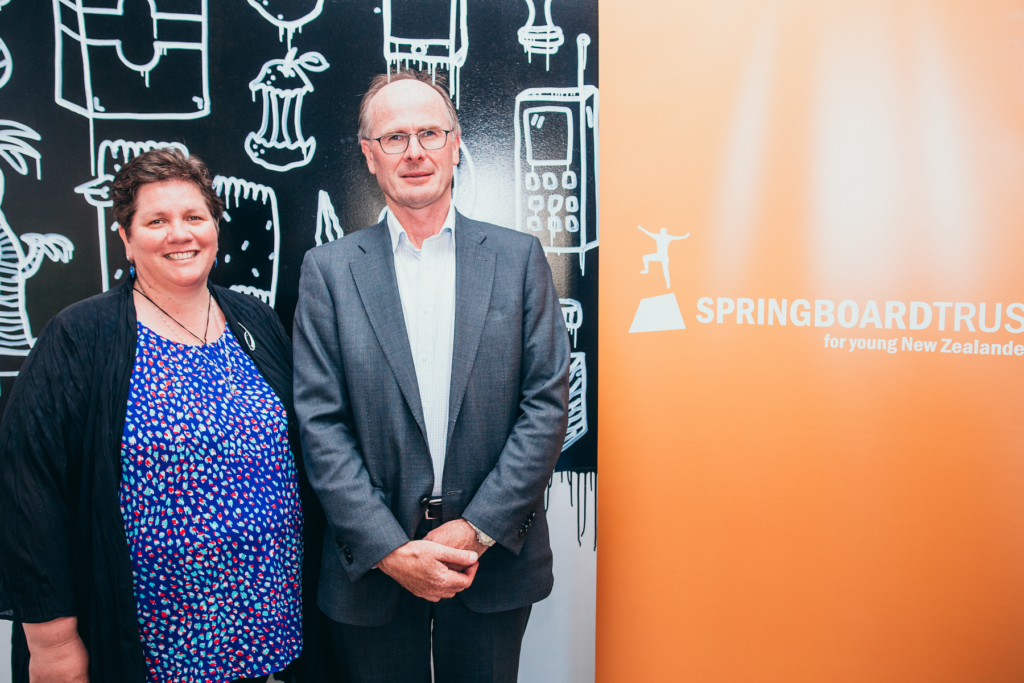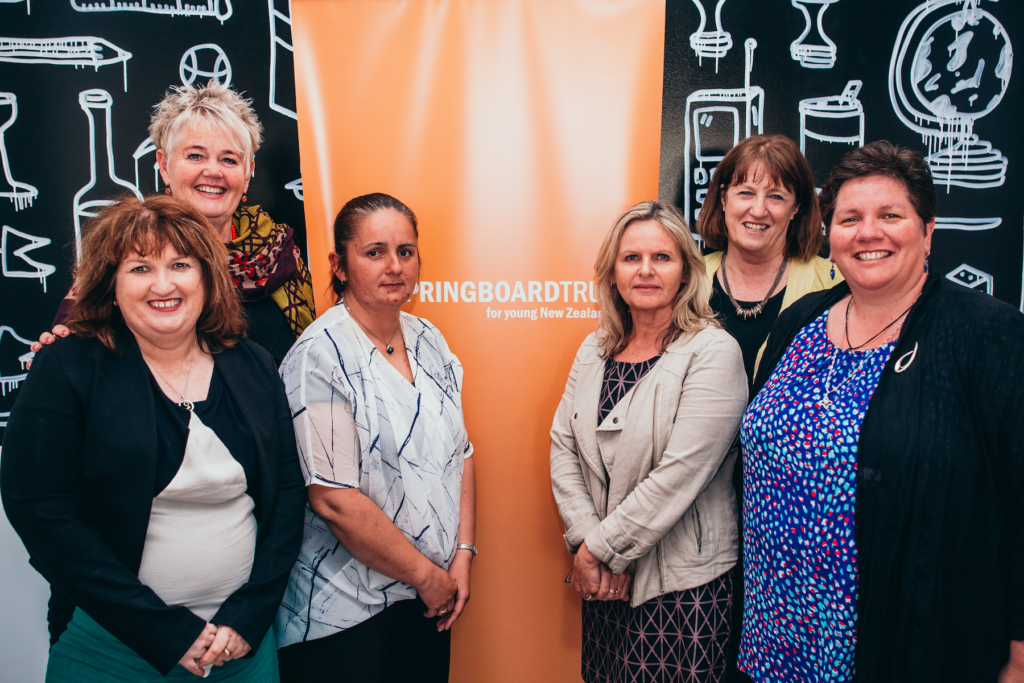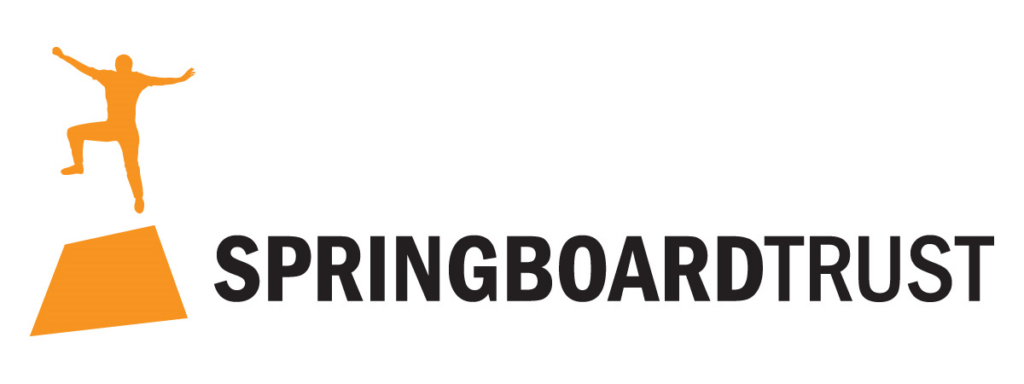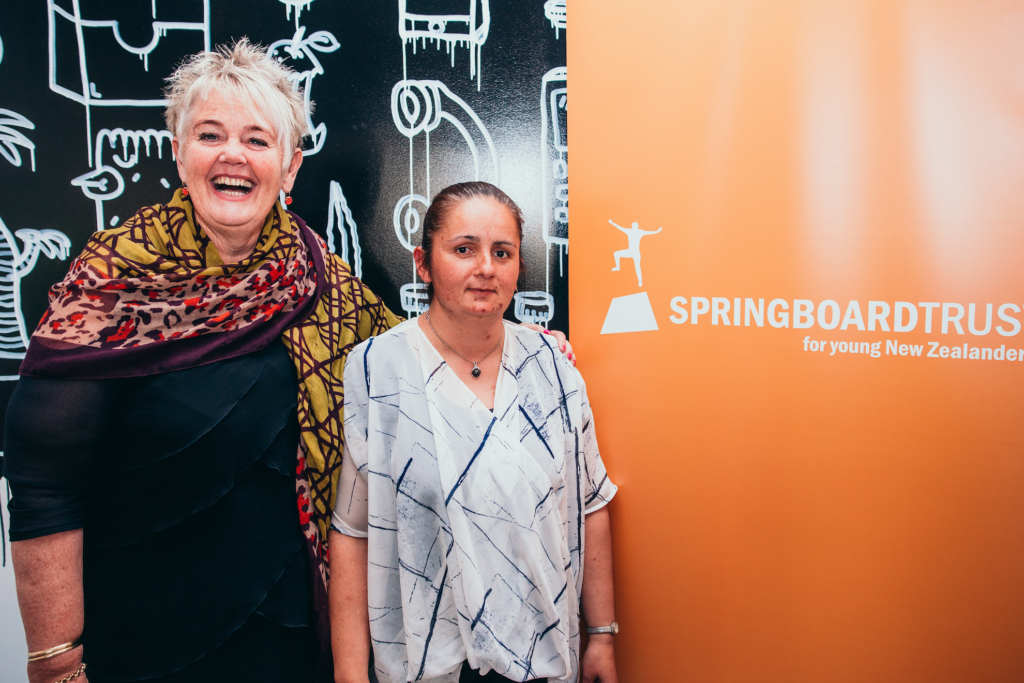“It’s not like a full stop at the end of SLPP – it keeps on going, and that’s wonderful”
Kerry Delaney (Titahi Bay School) and Vanessa Hendry (Porirua School) are veterans of Springboard Trust’s very first Wellington-based Strategic Leadership for Principals Programme (SLPP) cohort back in 2017.
Since then, they have each done amazing things, using their strategic planning and leadership skills to transform their schools. As they recently reached the end of the initial three-year strategic plan they each made with us, we thought it best to speak to them both about what they’ve been up to!
How it started…
When Kerry and Vanessa’s cohort was set up, Springboard Trust didn’t yet have a presence in Wellington – so the beginning of SLPP was a little different to what more recent participants have experienced.
Vanessa: “A colleague from our cluster knew about Springboard Trust and brought the idea to a meeting. Next thing we know, a group of us are going up to Auckland to meet the team and some schools who had done the programme before!”
Kerry: “That was amazing, having the time away from school to go to Auckland and listen to how other schools had benefited from the programme. Even our Mayor came with us, it was a phenomenal way to start.”
Vanessa: “I was a first-time principal, so coming along – hearing about strategic planning and other things I hadn’t had any formal training on – it was great to jump into that and understand what was ahead of us.”
And once the programme started, the hard questions began.
Cutting a strategy down to size
The first lesson for both Kerry and Vanessa in SLPP was that their strategic plans needed some editing.
Kerry: “The facilitator asked us to tell him our strategic goals – I realised I didn’t know! There were so many, the plan was so long-winded, 25 pages in total. And if it was too long for me to remember, it was going to be too long for our community.
Through SLPP, we took it down to a single A4 page. I loved that Jack (facilitator) used to always ask me ‘what are you trying to say, Kerry?’ – it really took me from sentences to words, which I needed.”

Vanessa: “That simplification of the plan, I loved that. Me and my school were going through a period of change, so the questioning, the ideas on how to make a simple plan that came through SLPP, that really helped me make an authentic document. I can look back and be proud of the fact that whānau and students were heard and reflected in every part of the plan.”
Kerry: “It’s hard work – that A4 took me 12 months!”
Vanessa: “So much of that is engagement though – which is really valuable. Working through my vision and strategic plan was a great platform for going back and forth with the community, getting that real and honest connection to what I wanted to do. When I did the programme, I had been a principal for just two and a half years – it was such a good opportunity to recalibrate and look at what we as a community want, and get everyone on board with how we get there.”
…. and how it’s going now
After creating a plan and bringing it to their school and community,Kerry and Vanessa each implemented some amazing initiatives – including work that continues today (in one form or another).
Kerry: “Some strategic priorities that worked well were those for our Māori and Pasifika community, that were written and illustrated by the community themselves – one of them had feedback from something like 800 people! We also had a neat map with stickers, and asked people to put stickers where they thought we should focus our local curriculum. That got a lot of people taking part in the process who hadn’t done so before.”
“But I think the biggest impact over time has been changing the initiatives. As the world changes and we keep on learning, there are constantly new tools for engaging communities and including all the right voices. I’m not locked-in to what I learned in 2017, I am continually learning because we’re all sharing with each other.”

Vanessa: “Early on, Springboard Trust connected me with a comms person who worked with me on an initiative, getting feedback on how we used apps like Seesaw. It was fantastic, it resulted in a whānau survey that eventually turned into a specially designed whānau evening for the school. We bring everyone in for a dinner and put sheets up around the room for feedback on the work we’re doing. During the dinner we explain what we’re doing and why, and then ask them to contribute – it’s been really effective!”
“I’ve also been keeping up with the other Wellington principals who have been with Springboard, the fortnightly focus meetings about all kinds of leadership topics.”
Kerry: “I haven’t been to those, but I think I have FOMO!”
Vanessa: “They’re a great chance to collaborate with other principals I might not see as much, be introduced to books and authors I hadn’t heard about. It’s nice, it’s not like a full stop at the end of SLPP – it keeps on going, and that’s wonderful.”
Kerry: I agree with that. I took a while to come back to Springboard, but we did High Performing Leadership Teams with my senior group. We debated a lot as a team – at one point we took on the facilitator! It really questioned what we were doing and why we were doing it, making sure we weren’t doing something because it’s what we always did. We got some great tools out of that, some we’re still using this year.
Rinse and repeat
As these two complete their first three-year plan, the excitement is palpable about what they will move on to next.
Vanessa: “We’ve been reviewing our plan for a while looking at what we did or didn’t achieve. The whānau have had their say, and we’re off again for the next three years!”
“That’s the beauty of the learning I have had with Springboard, it’s so sustainable. We have the framework and ways of being, and can apply that to what we want – effective teaching, our next PLD focus, staff meeting – everything is just so alive!”
Kerry: “Absolutely, absolutely. I had my ERO critical friend come to visit a while ago, they were gathering information and saw that I was doing Springboard – they were like, ‘well your strategic plan is going to be strong’. I’ve learned how to make sure our vision and plan is the true voice of our children and community – and that’s something really special.”









